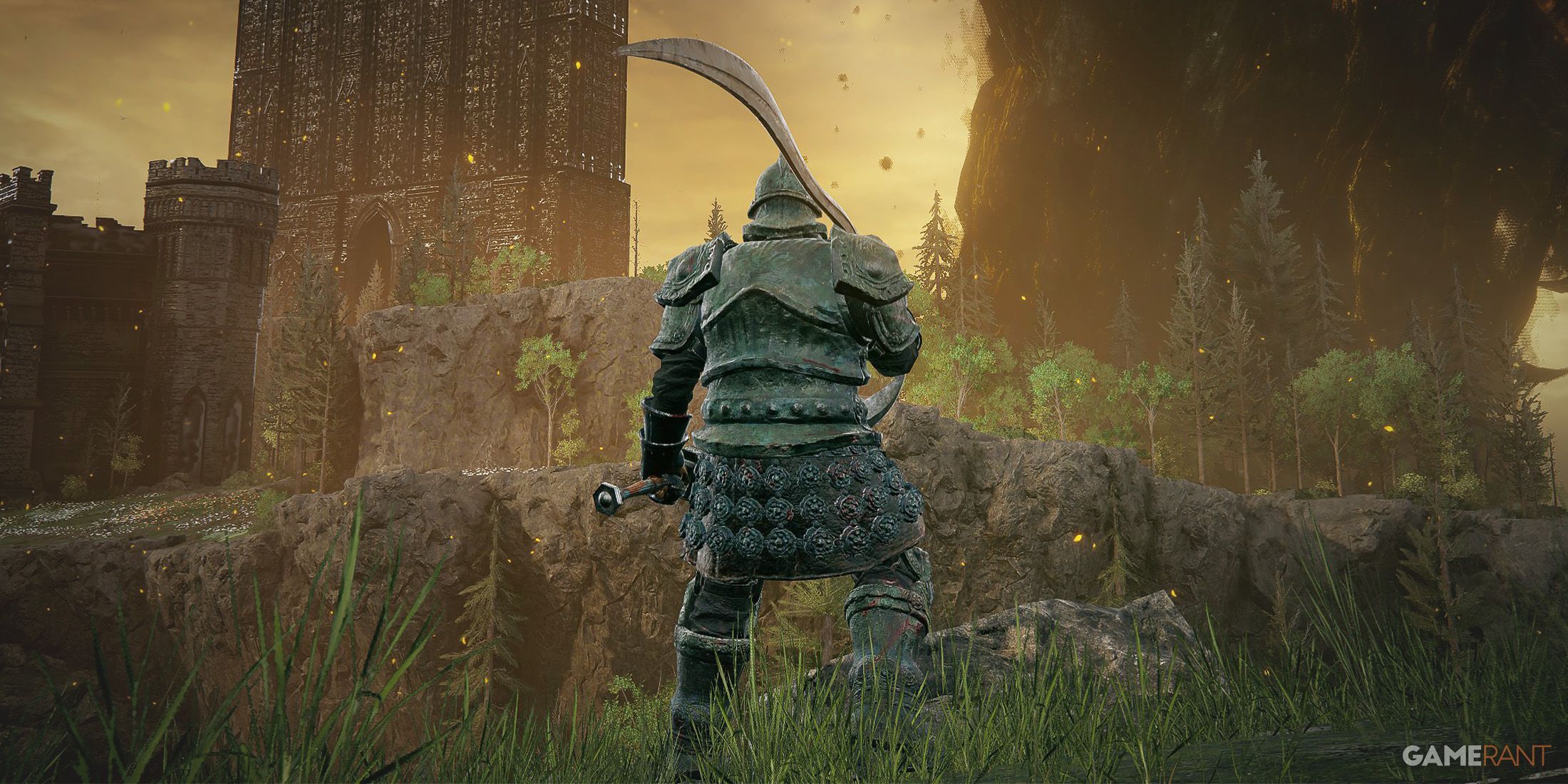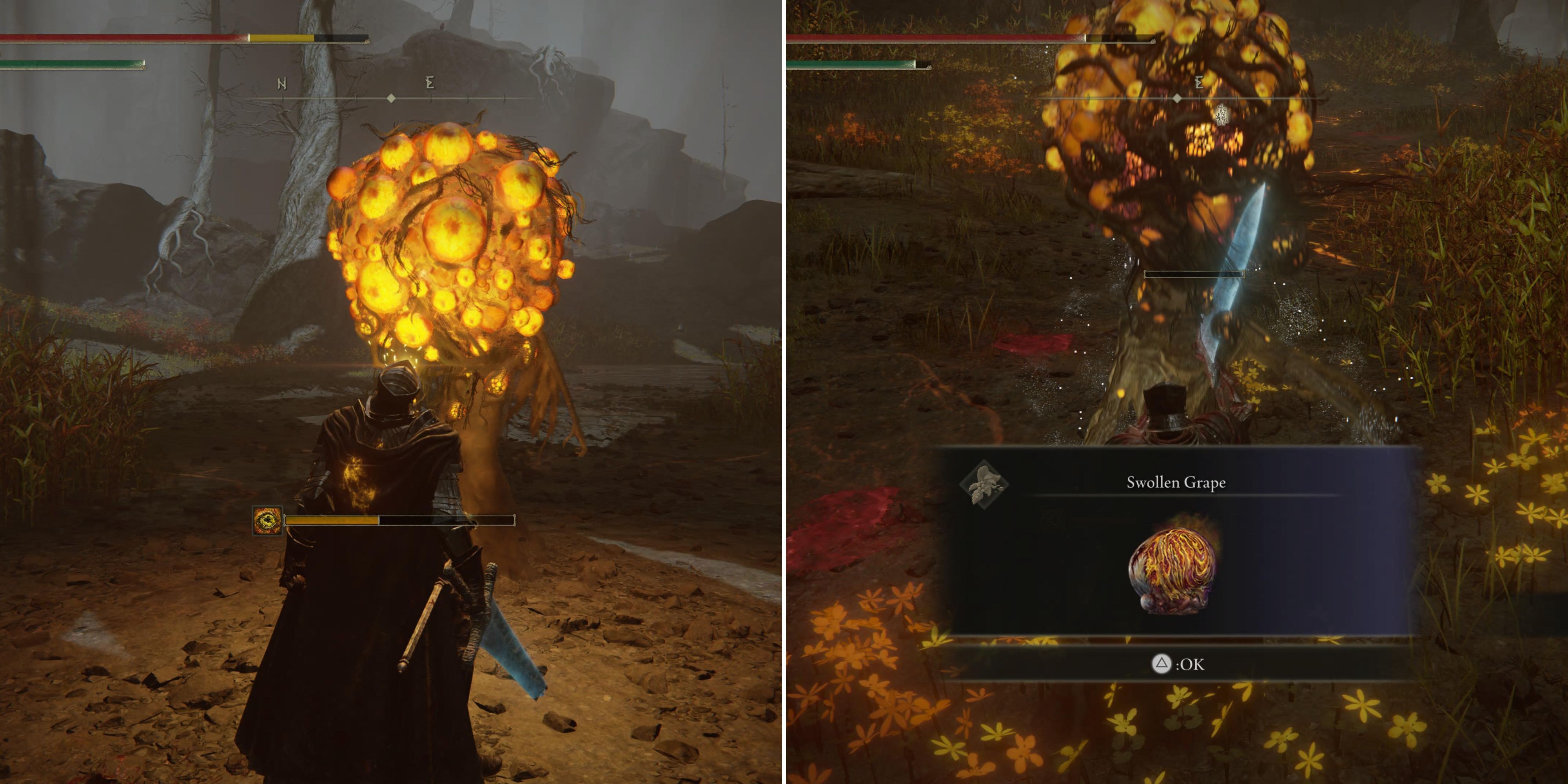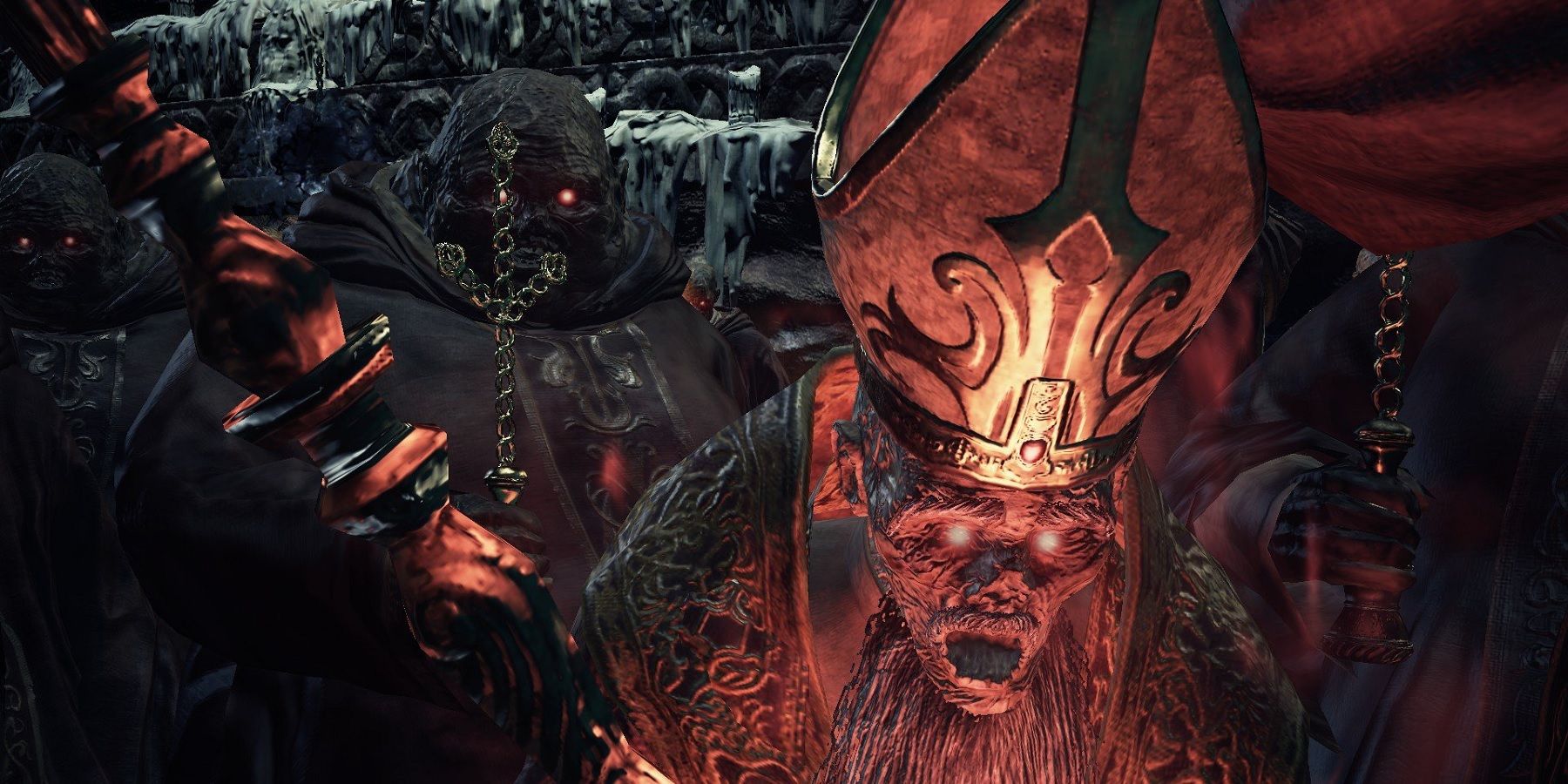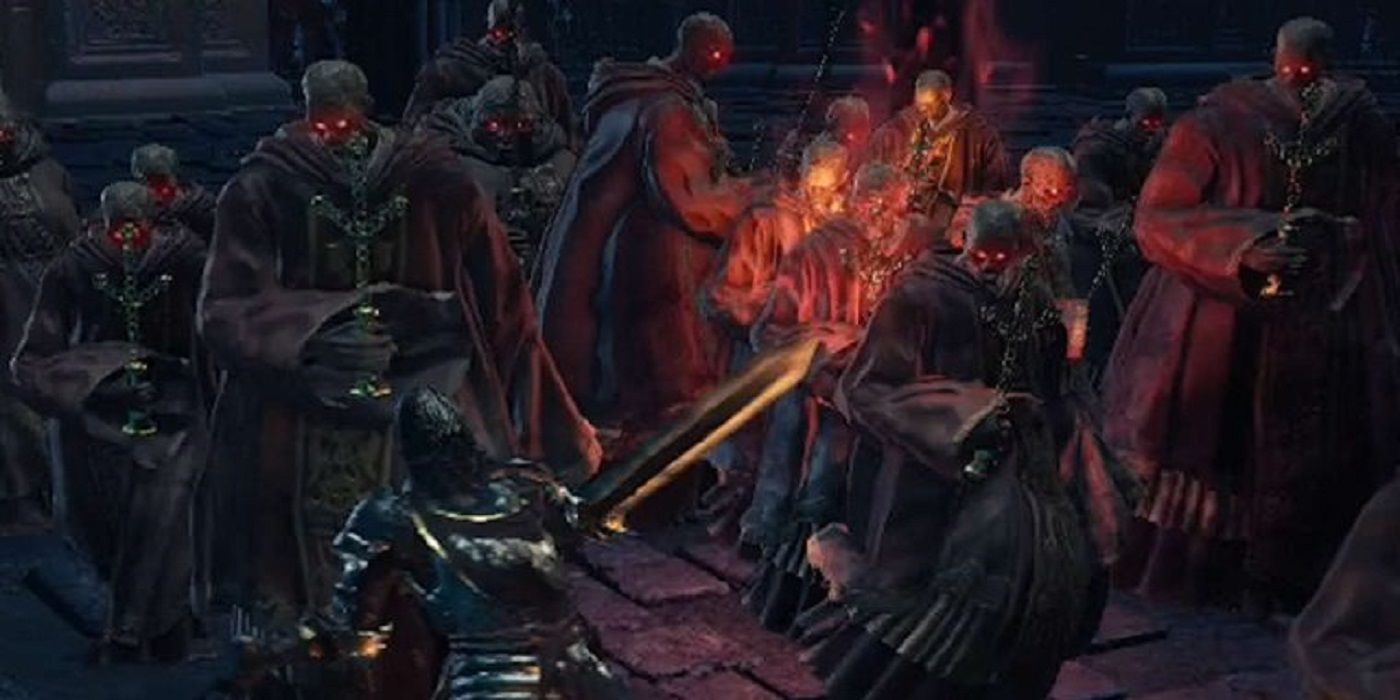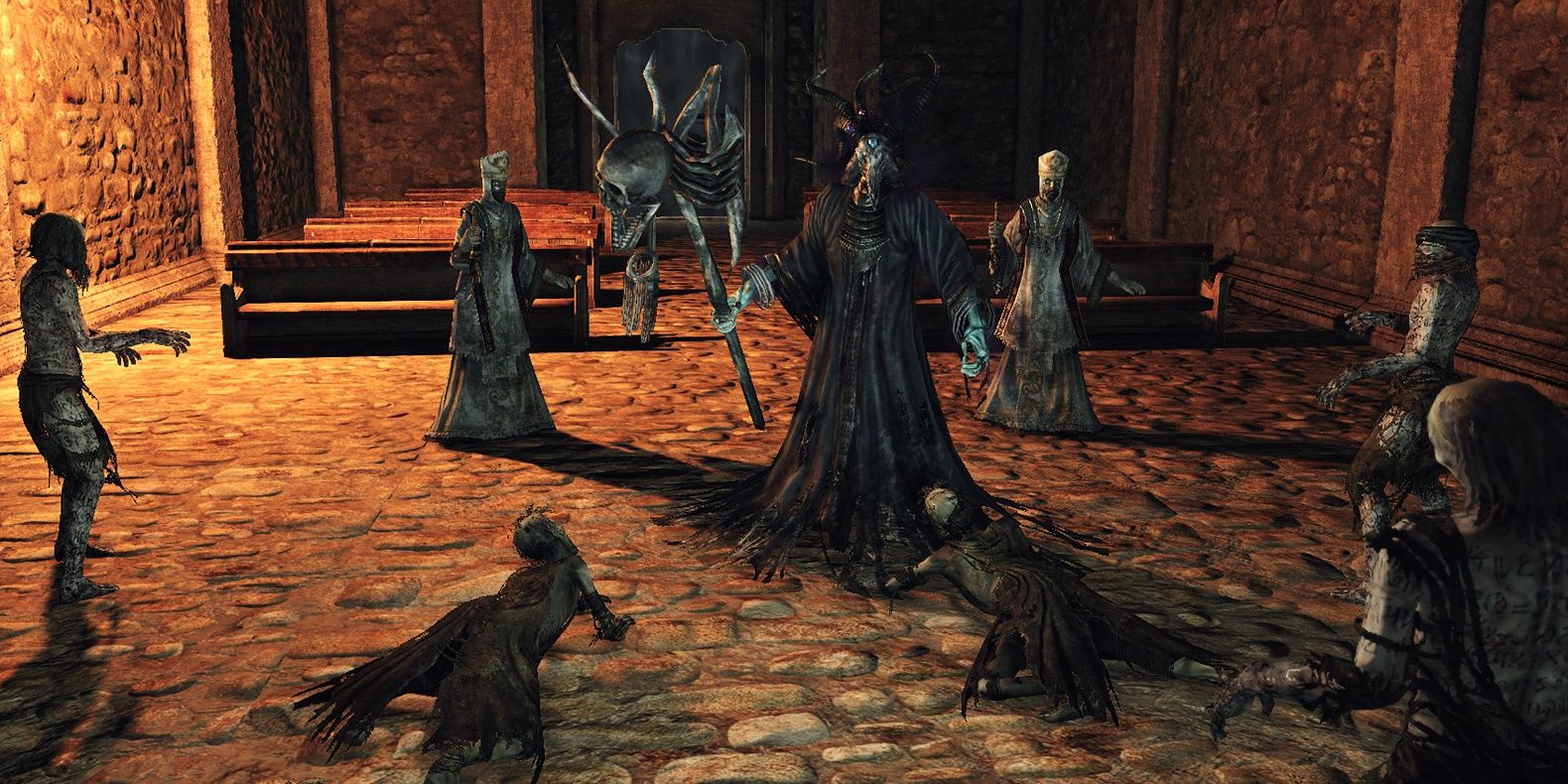While many of FromSoftware's bosses make use of unique movesets and arena designs, even encounters from titles as late as Dark Souls 3 lean heavily on gimmicks to diversify the fights. Among these gimmick bosses are the Deacons of the Deep, which takes an older concept from earlier titles and hones it to near perfection, similar to how Bloodborne's Darkbeast Paarl evolves the DPS check.
The Deacons of the Deep themselves aren't always seen as the most interesting fight in some playthroughs, but it does stand out when comparing Dark Souls 3 to older games. Most notable of these comparisons is to the multiple group bosses that can be challenged in Dark Souls 2.
Deacons of the Deep as an Ensemble Boss
It is nothing new for FromSoftware to pit players against multiple bosses at once, although it is rare for that number to top out at more than three enemies in a single arena. However, the Deacons of the Deep are among those rare situations where players are tasked with fighting against a massive group of enemies in order to proceed. The specific quirk of the fight is that killing only one specific enemy at a time will deal any damage to the larger health bar of the boss itself before the second phase.
The enemies that appear throughout this fight are among the three classes of cleric mobs, including a tall, average build, and a large variant of these individual deacons. In the first phase of the fight, the player is tasked with finding the one who is glowing red and killing them in order to deal a set amount of damage to the main Deacon of the Deep. This all leads to the Dark Souls boss' second phase, which turns the fight from a face-off against a massive group of mobs into a more focused encounter against a single boss that includes a lot of back-ups and a background timer.
In the second phase of the Deacons of the Deep, the main boss finally appears alongside four special mobs dressed in purple who will then activate a special spell that builds up in the air and will eventually curse the player. This secondary effect of the curse will only ever appear if the player takes too long to end the fight, but low-optimized builds and Dark Souls 3 challenge runs can run into difficulty here. Otherwise, it's a race to wipe out enough of the deacon mobs in order to open the actual boss up for steady damage before being overrun by the wave of enemies or the building curse.
Dark Souls 2's Early Attempts at Mob Bosses
While the earliest showing of an encounter against a giant mob of enemies before the real boss appears is with the Storm King in Demon's Souls, the most notable attempts of this gimmick come from Dark Souls 2. The best examples from Dark Souls 3's direct predecessor come in the form of Prowling Magus and Congregation, Royal Rat Vanguard, and the Skeleton Lords. However, Bloodborne's Celestial Emissary is another great example of a mob boss that also requires players to find one special enemy inside a giant group in order to take down the main health bar.
In the case of the group bosses in Dark Souls 2, many of them use the mechanic from the second phase of the Deacons of the Deep, with the main enemy to kill being hidden among identical-looking mobs. That being said, none of these bosses managed to create the combined aspect with different phases feeling completely distinct from each other in the way that Dark Souls 3's mob boss does. So, while the mob boss is nothing new to the Soulsborne boss roster, this iteration of the gimmick is easily the best version in the series.
Dark Souls 3 is available now for PC, PS4, and Xbox One.


